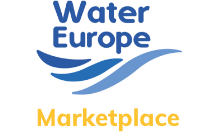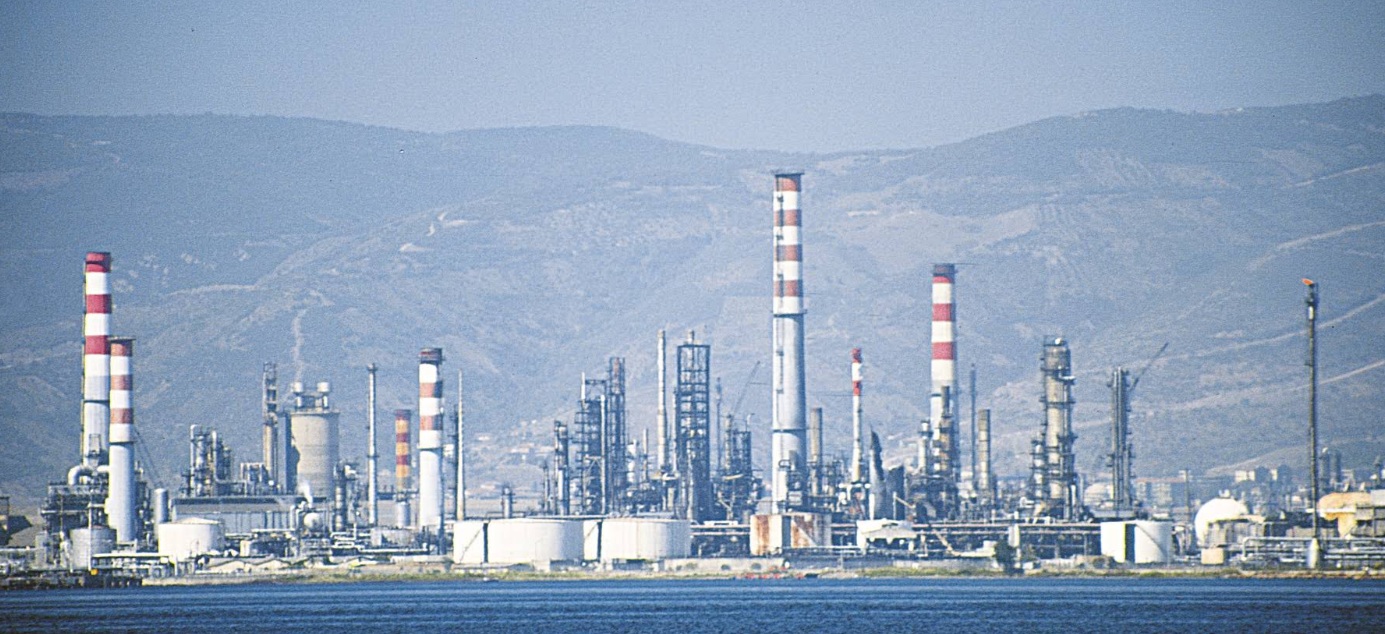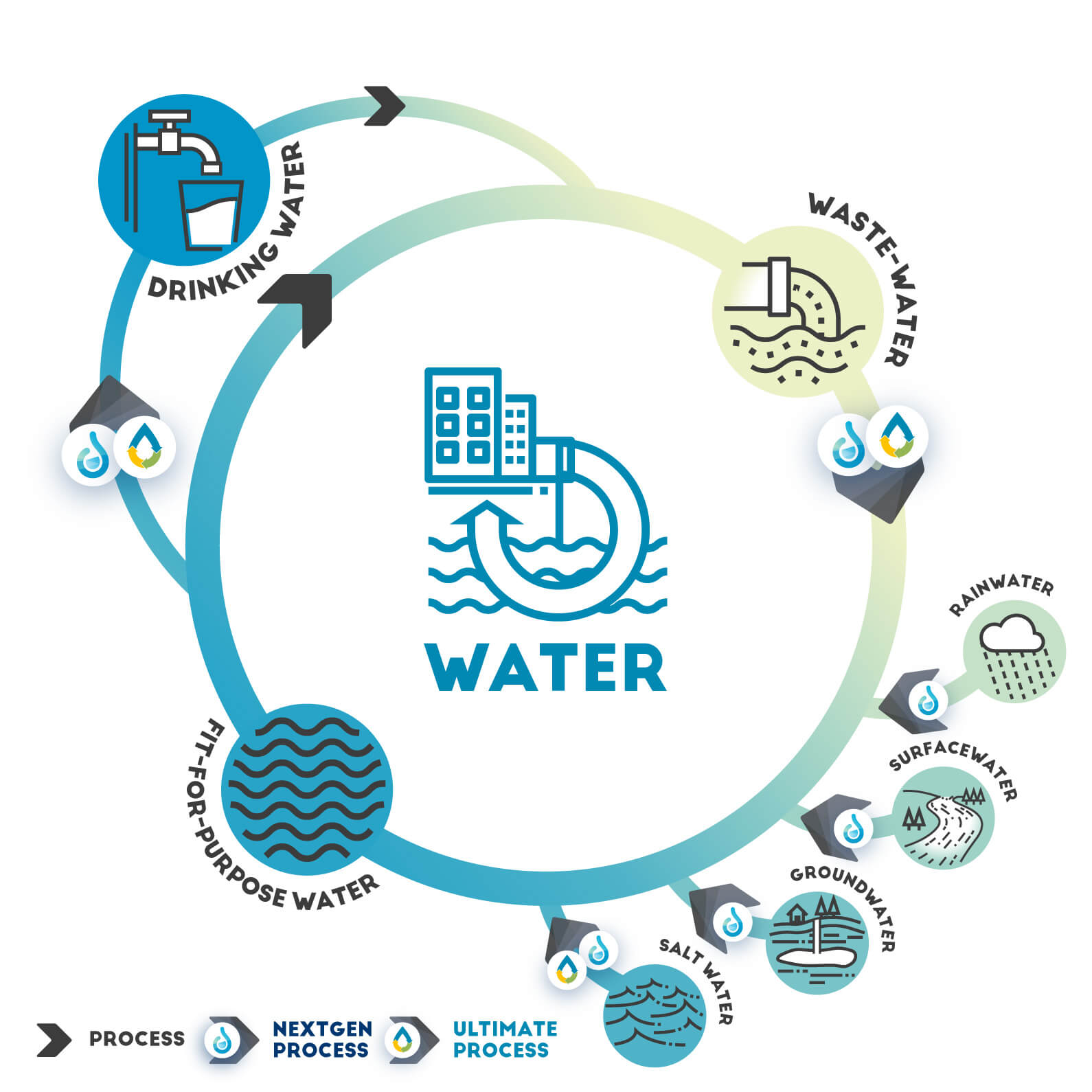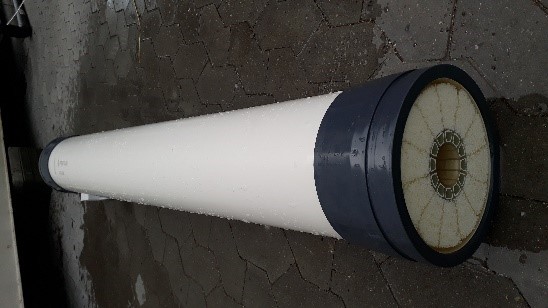Description
Tüpraş, Turkey's leading oil and gas refiner, is advancing water reuse at its Izmit Refinery by utilizing treated wastewater and reducing freshwater intake. The refinery aims for near-zero discharge by integrating innovative biological treatment technologies, including aerobic granular biomass, with smart monitoring systems. This pilot project will optimize water blending and quality control for better wastewater management. The goal is to reclaim at least 50% of contaminated water for industrial use, promoting sustainability and water conservation in the oil industry, with future potential for scaling up across Tüpraş' other refineries.
Applied technologies
Best practices
-
Implement Robust Pretreatment Processes:
The performance and longevity of membrane systems such as Ultrafiltration (UF) and Reverse Osmosis (RO) are highly dependent on upstream pretreatment. Including filtration and chemical conditioning helps reduce fouling and scaling risks. -
Design for Flexibility and Modularity:
Modular unit designs are advantageous for space-constrained refinery sites. They enable scalable deployment, easier maintenance access, and simplified system upgrades. -
Incorporate Redundancy in Critical Components:
Redundant configurations for pumps, control valves, and sensors help ensure continuous operation during maintenance or equipment failure, minimizing downtime in mission-critical applications. -
Optimize Energy and Chemical Usage:
Integrating energy recovery systems and carefully managed chemical dosing strategies reduces operating costs and environmental impacts. Frequent recalibration and adjustment based on real-time data are essential. -
Establish Predictive Maintenance Protocols:
Use data from real-time monitoring systems to drive maintenance schedules rather than rely on fixed intervals. This improves operational reliability and extends equipment lifespan. -
Integrate Real-Time Monitoring and Control Systems:
Deployment of digital tools with remote visualization and alarm capabilities enables proactive anomaly detection, supports performance optimization, and minimizes human error. -
Ensure Operator Training and Process Familiarity:
Operating complex treatment trains in industrial settings requires trained personnel familiar with both the physical systems and digital interfaces. Continuous skill development programs are recommended. -
Account for Local Environmental and Operational Conditions:
Equipment should be constructed with consideration of temperature fluctuations, salinity levels, and specific contaminants common in refinery wastewater streams.
Technology performance and best practices
The arrangement that was applied consisted of a biological pre-treatment using an Aerobic Granular Sludge (AGS) reactor, followed by Ultrafiltration (UF) to remove suspended solids, and Reverse Osmosis (RO) for high-efficiency removal of dissolved contaminants. The results achieved were:
-
Water Recovery
-
Overall Recovery Rate: 75–80% of feed water was recovered for reuse.
-
-
Effluent Quality
-
Total Dissolved Solids (TDS): Reduced to < 100 mg/L
-
Conductivity of Permeate: Below 20 µS/cm
-
Turbidity: < 1 NTU
-
Chemical Oxygen Demand (COD): Reduced by over 90%
-
Oil & Grease: Below detection limits after RO treatment
-
-
Membrane Performance
-
RO Salt Rejection Efficiency: > 98%
-
UF Fouling Index (SDI): Maintained below 3, ensuring stable RO feed conditions
-
-
Operational Metrics
-
Cleaning Frequency (RO/UF): ~once every 2 weeks under optimal conditions
-
Downtime: Kept minimal through automated alert systems and redundancy
-
Synergistic benefits
-
Enhanced Water Recovery through Process Integration:
The combined use of ultrafiltration (UF) followed by reverse osmosis (RO) in a sequential setup, allowed for high water-recovery-rate multi-stage purification, effectively removing both suspended solids and dissolved contaminants and meeting targets. -
Improved Operational Reliability with Real-Time Monitoring:
Integration of digital tools and real-time sensors enhanced the monitoring of key operational parameters (e.g., conductivity, pressure, flow), enabling prompt corrective actions and optimized cleaning cycles, effectively minimising downtime and improving the long-term performance of membrane units. -
Energy and Cost Optimization via Modular Design:
The modular configuration of treatment units facilitated energy-efficient operation, especially through the reuse of heat and optimized flow distribution. This led to reduced operational costs without compromising output quality. -
Mitigation of Fouling and Scaling Risks:
A well-coordinated combination of pretreatment (e.g., filtration, chemical dosing) and membrane technologies reduced the incidence of membrane fouling and scaling, thereby extending membrane lifespan and improving overall system efficiency. -
Environmental Benefits from Brine Management Integration:
The system's integration with brine minimization or recovery units contributed to a reduction in environmental discharge, aligning with zero liquid discharge (ZLD) objectives and national regulatory standards. -
Cross-Functional Use of Data for Decision-Making:
The synergy between physical treatment systems and digital monitoring platforms allowed for data-informed operational decisions, predictive maintenance, and more accurate compliance reporting.
Requirements and conditions
-
High-Quality Water Reuse Targets:
The treated water needed to be of sufficiently high quality for reuse within the refinery processes, requiring stringent treatment of complex effluents. -
Compatibility with Existing Infrastructure:
The new treatment modules had to be integrated with the existing refinery wastewater treatment plant, requiring hydraulic and operational compatibility. -
High Recovery Objective:
One of the project goals was to maximize water recovery, targeting zero liquid discharge (ZLD) where feasible. -
Complex and Variable Influent Composition:
Refinery effluents presented high variability in organic and inorganic load (including hydrocarbons, salts, and suspended solids), demanding robust pretreatment and adaptive process control. -
Membrane Fouling and Scaling Risks:
Reverse osmosis (RO) and ultrafiltration (UF) units operated under conditions that made them susceptible to fouling and scaling, necessitating effective pretreatment and frequent cleaning. -
Space Limitations:
The physical footprint of new units was constrained by the layout of the existing site, requiring compact and modular design solutions. -
Energy and Cost Considerations:
Treatment processes needed to be energy-efficient and economically viable, especially under continuous industrial operation conditions. -
Environmental and Regulatory Compliance:
The design had to align with Turkish national discharge standards and corporate environmental targets, including limits on brine discharge.
Key lessons
-
Importance of Pretreatment for Membrane Stability:
The operation of ultrafiltration (UF) and reverse osmosis (RO) units demonstrated that effective pretreatment is critical for minimizing fouling and scaling, which are primary risks in refinery wastewater applications. -
Process Integration Enables Water Quality Targets:
Achieving the required high-quality effluent was only possible through the combined use of sequential technologies—biological treatment, filtration, membrane processes—underscoring the benefit of an integrated, multi-barrier approach. -
Real-Time Monitoring Supports Operational Continuity:
The integration of digital monitoring tools provided early warning of performance deviations and supported predictive maintenance, contributing to reduced downtime and greater system reliability. -
Site-Specific Design Enhances Feasibility:
Designing the pilot to fit within the physical and hydraulic constraints of the existing refinery infrastructure was essential for ensuring operational feasibility and minimizing disruptions. -
Modular Configuration Aids in Scalability:
The adoption of a modular system design allowed easier scalability and adaptability to different flow conditions and treatment requirements, highlighting its importance for future replication. -
Holistic Control Improves Resource Efficiency:
Lessons from the combined use of tools revealed that system-wide optimization, including energy and chemical dosing control, significantly improves resource efficiency and cost-effectiveness. -
Data Integration Enhances Decision-Making:
Coupling physical treatment systems with data platforms allowed process engineers to make more informed decisions, improving the overall performance of the treatment train.
Lessons learned from technology operation
-
Specialized Competence is Essential:
Operating advanced membrane systems (e.g. UF, RO) in refinery wastewater conditions requires trained personnel capable of understanding system dynamics, interpreting monitoring data, and performing routine interventions. -
Membrane Fouling is a Persistent Risk:
Despite pretreatment, fouling and scaling of membranes remained a recurring challenge. Strict monitoring of feed water quality and timely cleaning-in-place (CIP) procedures were necessary to avoid irreversible damage or performance degradation. -
Preventive Maintenance is Crucial:
The use of scheduled maintenance routines, supported by real-time sensor alerts, proved effective in reducing downtime and ensuring continuous operation under fluctuating influent conditions. -
Operational Continuity Requires Redundancy:
Lessons showed that incorporating redundancy in key components (e.g., pumps, sensors) helps mitigate unplanned outages and contributes to system resilience during high-load periods or equipment failure. -
Downtime Often Linked to Instrumentation or Biofouling:
Failures in instrumentation (e.g., flow meters, pressure sensors) and biofouling in warmer weather were identified as sources of intermittent system shutdowns, requiring more robust protective measures and seasonal maintenance adaptation. -
Clear Operational Protocols Improve Response Times:
Having standardized procedures for anomaly detection, alarm response, and membrane cleaning accelerated the resolution of operational issues and reduced reliance on ad hoc troubleshooting. -
Digital Tools Enhance Predictive Capability:
The integration of monitoring platforms enabled predictive analytics, improving the ability to anticipate fouling trends or mechanical wear and schedule interventions before performance losses occurred.




